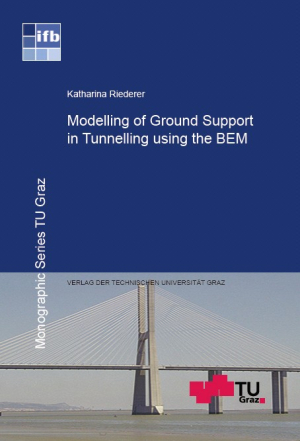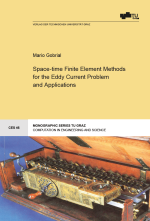Numerical simulation is a growing and important tool in the field of tunnel construction. It is used to optimise the design in terms of cost savings, construction time and improved safety. Commonly used methods require a significant amount of computational costs especially for large 3D simulations; the effort for mesh generation as well as the calculation time increase considerably. An attractive alter¬native for simulating tunnelling problems is the Boundary Element Method (BEM). However, the BEM is not as far developed as other methods at the moment.There are currently no commercial programs available that include all thefeatures required for conventional tunnelling, for example the simulation of ground support and ground improvement techniques.
The aim of this work was the development and the implementation of methods to simulate ground support (rock bolts and pipe roofs) into the BEM program (BEFE++). Novel methods were developed to simulate these support measures efficiently and realistically. Especially for the simulation of rock bolts the new methods show considerable improvements in comparison to commonly usedmethods: the mesh generation is much simpler; the system of equation is smaller; the method can be easily and efficiently combined with non-linear problems (e.g. elasto-plastic material behaviour); and the high stress variations in the near-field of the bolt can be simulated more accurately. With a relative small effort very accurate results are obtained.
Ausgabe: kartoniert
ISBN: 978-3-85125-090-9
Umfang: 197 Seiten
Sprache: Englisch
Erschienen: Dezember 2010
Reihe: Monographic Series TU Graz / Structural Analysis
Vergriffen!
Numerical simulation is a growing and important tool in the field of tunnel construction. It is used to optimise the design in terms of cost savings, construction time and improved safety. Commonly used methods require a significant amount of computational costs especially for large 3D simulations; the effort for mesh generation as well as the calculation time increase considerably. An attractive alter¬native for simulating tunnelling problems is the Boundary Element Method (BEM). However, the BEM is not as far developed as other methods at the moment.There are currently no commercial programs available that include all thefeatures required for conventional tunnelling, for example the simulation of ground support and ground improvement techniques.
The aim of this work was the development and the implementation of methods to simulate ground support (rock bolts and pipe roofs) into the BEM program (BEFE++). Novel methods were developed to simulate these support measures efficiently and realistically. Especially for the simulation of rock bolts the new methods show considerable improvements in comparison to commonly usedmethods: the mesh generation is much simpler; the system of equation is smaller; the method can be easily and efficiently combined with non-linear problems (e.g. elasto-plastic material behaviour); and the high stress variations in the near-field of the bolt can be simulated more accurately. With a relative small effort very accurate results are obtained.





